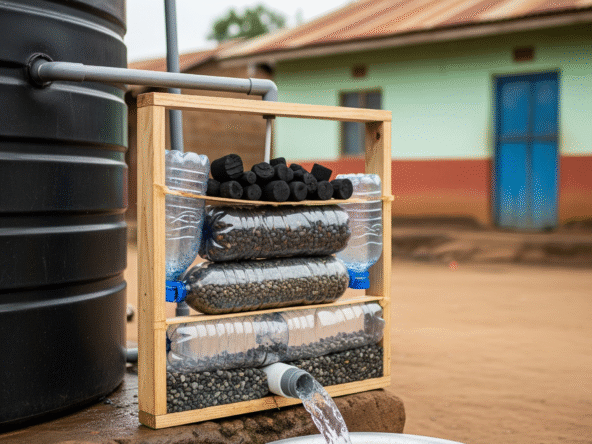Selecting the right water storage tank is essential for homeowners across Kenya, particularly in rural and peri-urban areas where water supply may be erratic or seasonal. Whether you’re considering a 10000 litre Kentank, a durable steel tank, or an underground concrete tank, the material you choose will determine the tank’s lifespan, cost-effectiveness, and water quality over time.
This guide compares plastic, steel, and concrete water tanks, helping you choose based on your household needs and budget.
1. Plastic (Polyethylene) Water Tanks: Versatile and Affordable
Plastic tanks commonly known as poly tanks are by far the most widely used in Kenya. Available from trusted manufacturers such as Kentank, TopTank, and Roto, these tanks range in size from 500 litres to 10,000 litres or more.
Benefits:
- Budget-friendly and easy to transport
- Resistant to UV rays (especially black tanks)
- Available in vertical, horizontal, and slimline designs
- Ideal for both ground installations and elevated towers
Explore the Top Water Tank Brands in Kenya to compare features, warranties, and performance.
Best suited for:
- Gravity-fed tank setups
- Rainwater harvesting
- Households with low to medium water demand
2. Steel Tanks: Durable and High-Pressure Friendly
Galvanized or stainless steel water tanks are ideal for homes and institutions that require large volumes of water or operate in high-temperature zones.
Benefits:
- Stronger and more impact-resistant than poly tanks
- More tamper-proof in high-theft areas
- Excellent for pressurized plumbing setups
Drawbacks:
- Higher purchase and installation costs
- Require corrosion protection if not stainless steel
- Heavier and harder to relocate
To enhance their lifespan, pair steel tanks with lockable tank enclosures.
3. Concrete Tanks: Permanent and Underground-Friendly
Concrete tanks, often custom-built on-site, are best for large-scale storage and long-term solutions. They’re popular in institutions, farms, and apartment complexes.
Benefits:
- Can last over 30 years if properly built
- Offers excellent insulation from heat
- Ideal for underground installation to save surface space
Drawbacks:
- Expensive to construct
- Cracking risk if poor workmanship or ground shifting occurs
- Non-portable and take longer to install
See guides on Soak Pit Design and Construction Site Drainage Planning to ensure your concrete tank setup handles overflow and ground water properly.
4. Price Comparison by Material
| Tank Material | Approximate Cost (KSh) | Capacity Range |
|---|---|---|
| Plastic (Poly) | KSh 6,000 – 90,000 | 500L – 10,000L |
| Steel | KSh 20,000 – 300,000+ | 1,000L – 30,000L+ |
| Concrete | KSh 50,000+ (site-built) | 5,000L – 100,000L+ |
For tank automation, see automatic refill systems and float switch integrations.
5. Tips Before You Choose a Tank
- Use this Water Tank Sizing Guide to estimate daily water needs.
- If planning underground storage, allow for overflow and access—integrate with multi-tank systems.
- Choose a tank that’s easy to clean—see maintenance routines.
- Always include basic fittings like overflows, inlet filters, and drain taps for sanitation.
There’s no single “best” tank material for everyone. The right choice depends on budget, location, storage capacity, and long-term goals.
- Go with plastic if you need a quick, affordable, and flexible solution.
- Choose steel if you’re investing in long-term durability with enhanced security.
- Opt for concrete for large, permanent, and underground water solutions.
Explore More Water System Articles:


